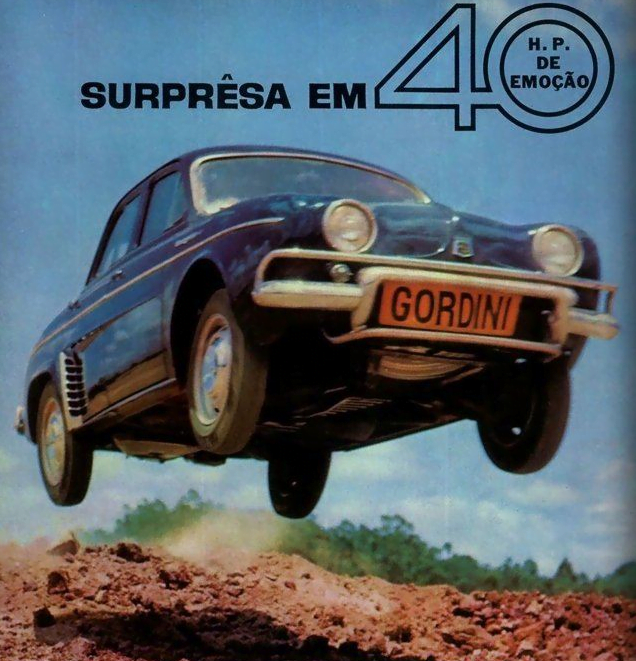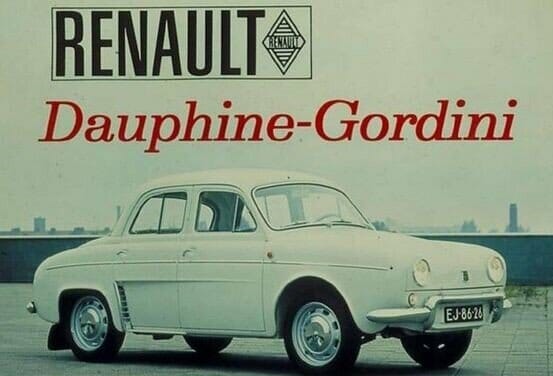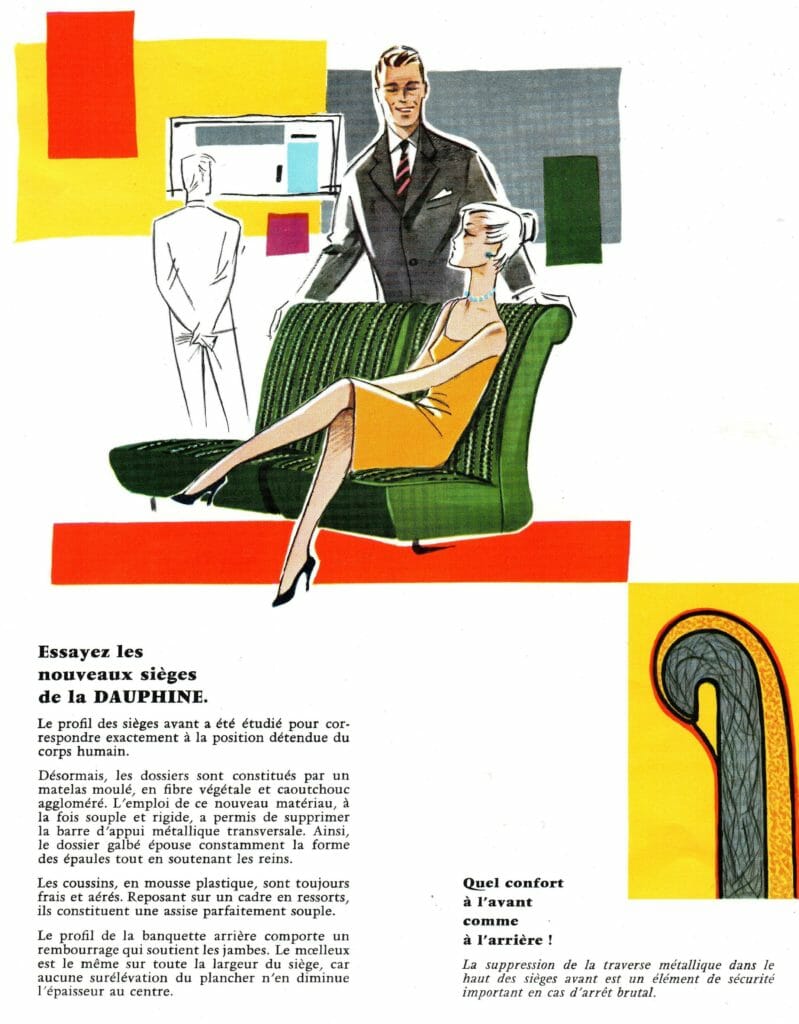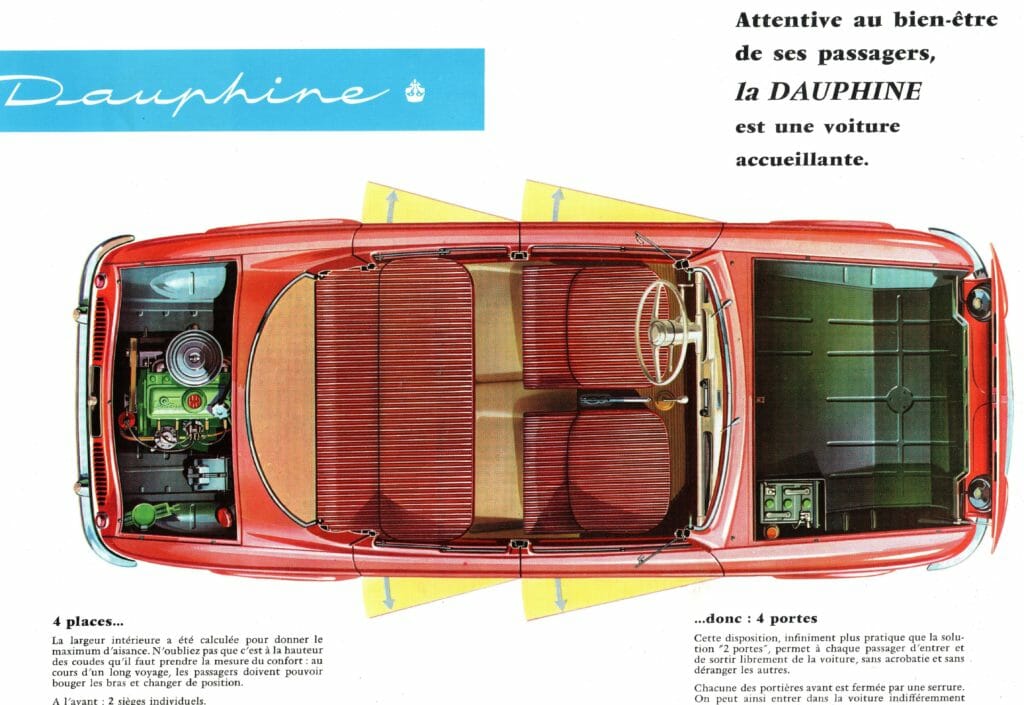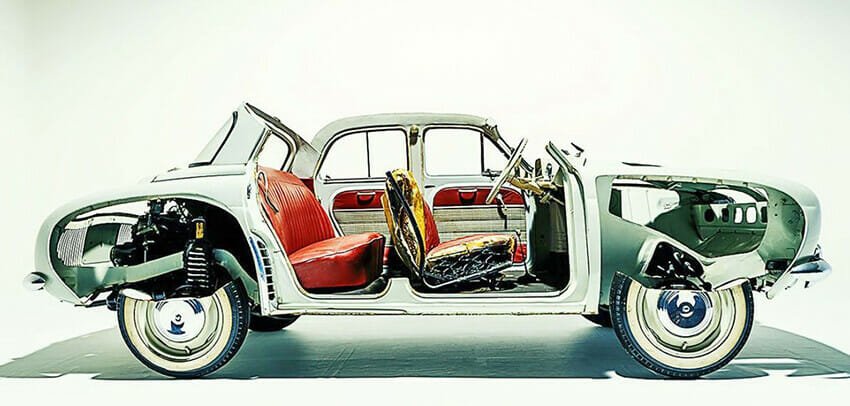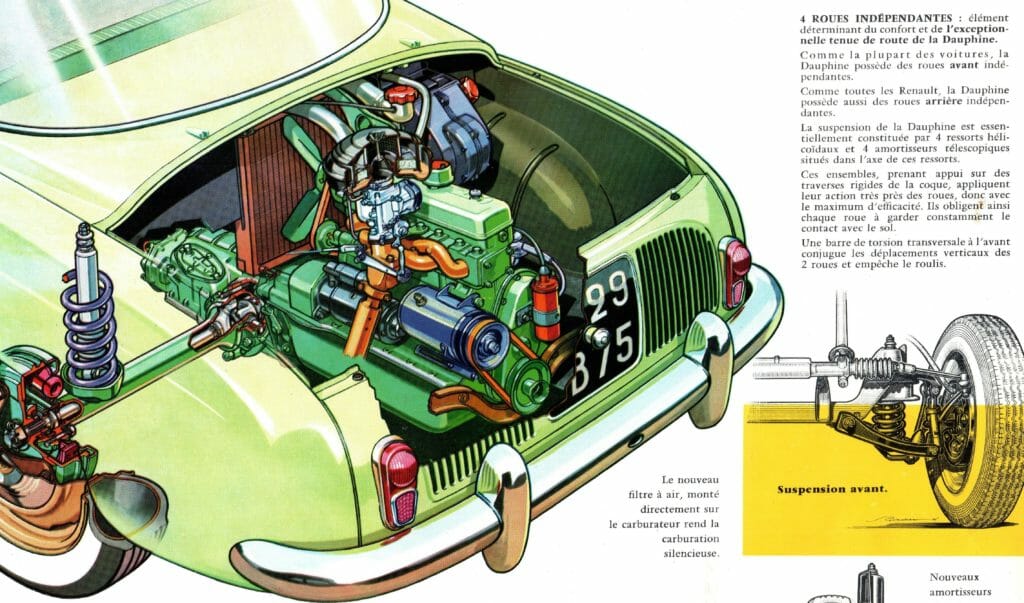Inicio » Our vehicles » Renault Dauphine Gordini
Share in:
Renault Dauphine Gordini
Origin: Barcelona, Spain, 1963

Our Renault Dauphine (or Renault Gordini) was registered in Barcelona in 1963. It is a “Gordini” type unit with 6V electrical installation. Given the year of registration, it was possibly one of the last units with this 6V installation.
We acquired this vehicle in December 2019, and spent about two years working on restoring and tuning it. This car had been stored in a shed for several years as part of a private collection, and although its mechanics were well maintained, it had many other points to improve/rebuild.
It is currently in a outstanding condition: both mechanically – it has been revised/adjusted/renovated many points, such as ignition, carburetion, front and rear axle – and finishes: It has undergone a complete renovation of the interiors, as well as several improvements of the electrical installation, steering wheel, instrument panel and radio.
If we also consider the renewal of the paint (including auxiliary parts and underbody) and the replacement of almost all the external chromed accesories, the result is that we have one of the best preserved/renewed units of this car which calls the attention to everyones wherever it is.
If we also consider the renewal of the paint (including auxiliary parts and underbody) and the replacement of almost all the external chromed accesories, the result is that we have one of the best preserved/renewed units of this car which calls the attention to everyones wherever it is.
This vehicle is in circulation and available for rent if you need it for a photo shoot, filming or exhibition. In any case, please feel free to contact us if you have any vehicle-related needs so we can help you.
Also, if you are an owner or future buyer of one of these models and you need any information about parts, spare parts, or technical information you may need, please contact us because we will be happy to share it with you.
Renault Dauphine: History
1951: Birth - Renault Dauphine : The sedan with a family vocation
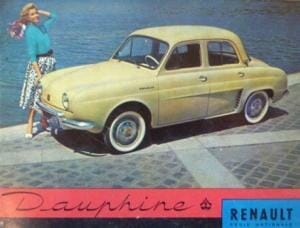
During the post-war years in Europe, and until the 1950s, the Renault catalog models were mostly the Renault 4CV and the Fregate. It is in this context, with Pierre Dreyfuss at the CEO of the Renault group, when started the project of a popular Renault, more familiar and more modern than the Renault 4CV of that time. The project began in 1951 and in 1955 about 150 pre-production units of the new Dauphine were built. This model, a sedan of almost four meters, was certainly more spacious and comfortable than its predecessor, the Renault 4CV, with a vocation clearly oriented to families, or those looking for a more spacious and more powerful cars, keeping inside the category of affordable vehicles. Despite the differences with the 4CV, this new Dauphine shared many of the technical solutions with its predecessor – in fact, today it can be seen that many of the references of parts and pieces are shared between the two models. Like the Renault 4CV, the trunk was at the front, but with a larger cargo volume than its predecessor.
It was in 1956 when the Dauphine was introduced as a marketable production car, available in 7 different colors. Capable of reaching 110 km/h, this new Renault could be purchased with two extra options, the Ferlec clutch – an electrically operated clutch operated by a panel of buttons – and the sunroof. During the first year, various improvements and upgrades have already been incorporated, such as a clutch upgrade. FerlecA new sun visor now in plastic, a more efficient Sofica heating system, a thermostat, new side light indicators, new solid rim wheels with 3 nuts, a new two-tone dashboard, or a vinyl-lined glove box.
1958: The Gordini version
The Gordini version made its appearance in 1958. It owes its name to the Italian-born car engineer Amédée Gordini, creator of this improved engine version. The engine is over powered up to 37.5 hp. and is distinguished by the anagram on the rear hood, wider tires, 4-speed gearbox and side chromed moldings. However, the evolution of the classic Dauphine continued. The Ferlec clutch is simplified, while some technical developments are installed. Finally, the pedals and front seats were modified. In 1959, the dashboard returned to a single color, while the front seats could be adjusted with a side knob. Car got a new upholstery. New door handles appeared, also a new gearbox, as well as a new suspension called Aerostable based on a kind of air-filled rubber “cushions” in the rear axle, which functioned as “elastic stops” at the end of the suspension travel. Finally, the rear doors incorporated a child safety device, the turn signals change their shape from round to long horizontal and the wheel hubcaps became into stainless steel. The Gordini version, along with the “normal” Dauphine, also received all these modifications.
Later the Gordini incorporated a lockable rear hood, new instrument panel, while the engine was increased to 40 hp. The upholstery is offered in a honeycomb patterned fabric. A new ”Gordini” monogram is installed on the front wings and rear hood, while as an option it is possible to install Michelin X tires in size 135×380.
1960: The Ondine and version 1093
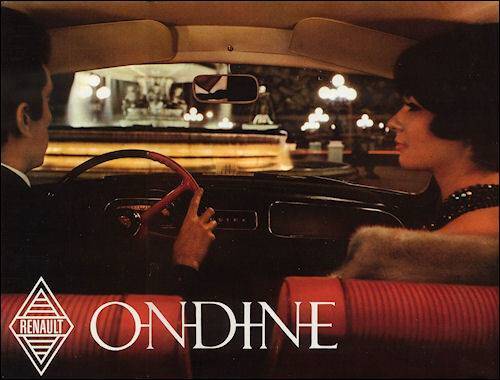
The Ondine was born as a “luxury” version of the Dauphine. In 1960 it is delivered with a new gearbox, as well as a new starter motor, more flexible shock absorbers and a new Solex carburetor.
On the exterior, the side indicators are replaced by round models at the front, and at the rear they were integrated into the tail lights. Finally, the accelerator pedal was integrated into the passenger compartment floor.
In addition, metallic paints and a more elaborate and luxurious upholstery did complete the model as a “luxury” version of the Dauphine saga.
In 1961, the Ondine received new modifications: Based on the Gordini it also received new wheels, a chrome frame for the rear license plate, anagrams on the front fenders, seats with greater adjustments, rubber bumpers on the rear bumper, a black painted dashboard, and a trunk upholstered in cloth. In the meantime, the Dauphine Gordini last set was manuactured, since it was planned to be replaced during the year by the Ondine Gordini. This one is distinguished by its white band tires and high beam indicator lamp on the dashboard.
In 1962 the only modification to the Dauphine was the appearance of new front turn signals borrowed from the Renault Floride. The Ondine and Ondine Gordini receive 8-hole wheels (12 previously) and a new sporty version appears: the Dauphine 1093. It is distinguished by its white color with blue stripes, as well as slightly larger headlights. Its engine powered 50 hp. which allowed it to reach the speed of 143 km/h.
At the end of 1962, the Ondine disappeared from the catalog, while the Dauphine 1093 disappeared a year later, at the end of 1963, after only 2 years in the catalog.
1964: "Export" version in France and last period of the Dauphine
For the 1964 “export” series, 4 disc brakes were installed. At the front, seat belt anchorage points are also installed. The rear suspension is modified and the tank capacity is increased to 30 liters. This Export version was distinguished by the 4-speed gearbox, chrome-plated rods and strips, door pockets, new seats (borrowed from the R8), chrome-plated interior door handles and trunk upholstery.
In 1965, the Dauphine adopted the 4-speed gearbox of the Export version. Both versions, the Dauphine Export and the “normal” Dauphine would last until 1966, the last year of production of both. That year the Gordini version was the only version available until 1968. As last changes, the city horn was eliminated (it had two horns, one for the city, and a louder one for the highway) and adopts the tank of the previous Export version (29 l.).
The year 1968 was going to be the last year of presence of the Dauphine Gordini in Renault factories of France. It remained still available in some countries until 1971, and in the case of Spain, FASA maintained production until 1967.
Present in the French catalog for 13 years, the Dauphine was a great success, especially among families who wanted a more spacious and versatile car than the 4CV. It was produced in 2,139,641 units in France, 125,912 in Spain, 88,324 units in Argentina, by Industrias Kaiser Argentina -between 1960 and 1970-.
Renault Dauphine in Spain

The Dauphine was manufactured in Spain by FASA Spain in Valladolid. Almost 126,000 units were manufactured between 1959 and 1967. This vehicle competed with the SEAT 600, the first series of the SEAT 850, the Simca 1000, the Citroen 2CV manufactured in Vigo. During those years, the national automobile offer in Spain was very reduced, and the few imported models available were completely unaffordable for vast majority of the population.
The first serie was the Dauphine R1090 with engines between 27hp and 32hp, 3-speed gearbox, and 6V electrical system.
In 1961 the production of Gordini R1091 version was launched powering 38hp or 40hp -depending on the period of manufacture series- and it was around 1963/64 when the 6V electrical installation became to 12V (our unit, for example, is registered in 1963 and being a Gordini with 4 gears, it is still a 6v electrical installation unit). This Gordini version was going to last until 1967 and was the one that received the most improvements, such as black dashboard, two-tone steering wheel or ventilated rims.
Between 1962 and 1965 the more luxurious Ondine version was available in Spain, although with more modest engines (27hp, 30hp or 32hp) than its brother the Gordini.
In Spain, production of the Renault Dauphine (in any of its variants) ended in 1967.

